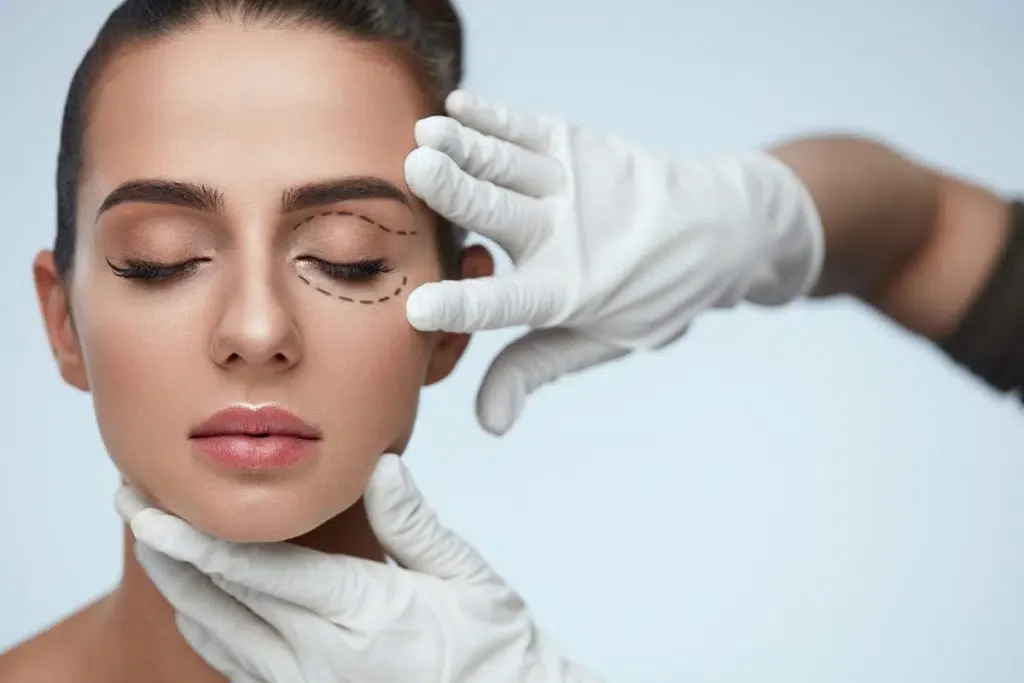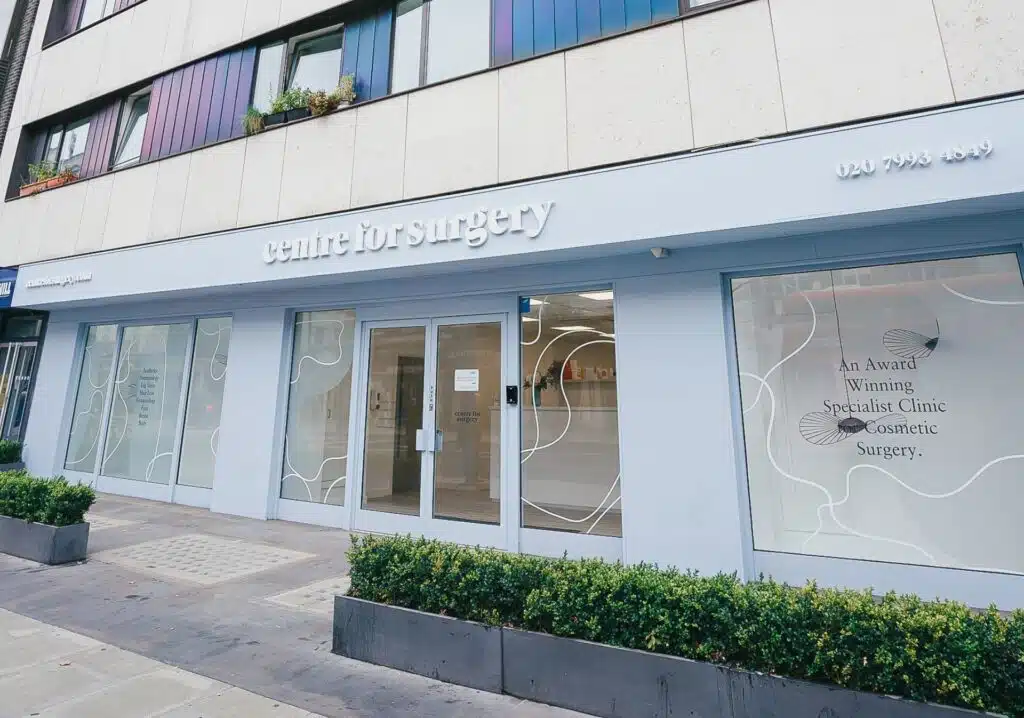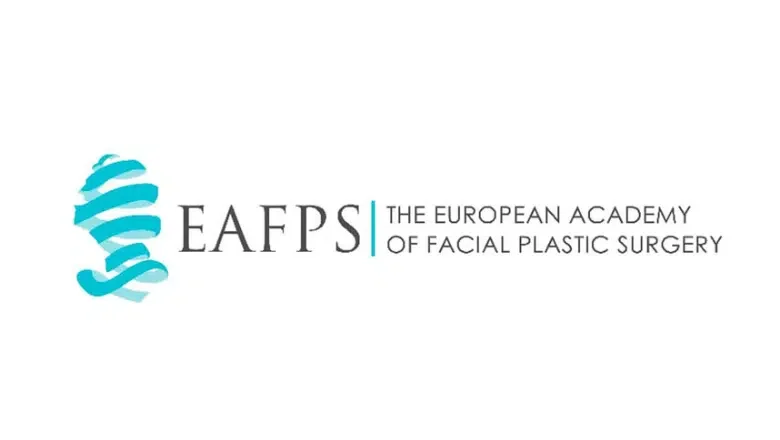The eyes are the first thing we look at when talking with someone. And nothing gives away the effects of age and gravity than droopy, tired eyes or bags under the eyes. Excess fat, wrinkles and hooded lids create a fatigued and older look. With eyelid surgery, medically known as a blepharoplasty, our surgeons can help rejuvenate the appearance surrounding the eyes, improving the appearance of the upper eyelids, lower eyelids or both. This provides patients with a more youthful, rested and more alert look. Our surgeons can perform both upper and lower blepharoplasty at our Baker Street clinic in London.
Upper Blepharoplasty
Upper eyelid surgery involves the removal of excessively stretched skin that can cause multiple wrinkles. If there is an underlying droopiness of the lid, a muscle repair can be performed through the incision at the same time.
Lower Blepharoplasty
Lower eyelid surgery involves the surgeon redistributing the fat within the lower eyelid, which removes the appearance of bags and under-eye puffiness. The most suitable form of blepharoplasty will depend on where stretched skin and excess fatty deposits are located around the eyes. As experts in facial anatomy, our surgeons will determine the best approach during your consultation.
Asian Blepharoplasty Surgery
Approximately 50% of Asians are born without a visible upper eyelid crease – a fold in the area just above the eyelashes. Our surgeons offer an Asian blepharoplasty procedure that helps create a natural-looking crease on the upper eyelid, creating an improved shape. This surgery is also called double eyelid surgery. It’s important to note that there is a difference between Asian and Caucasian eyelids, both in size and in shape. The Caucasian lid crease is about 20% larger than an Asian eyelid crease and also tapers closer to the eyelashes as the fold goes outward. Our surgeon’s goal with Asian eyelid surgery is not to give a Westernised appearance to an Asian face but rather to create a crease that looks completely natural.
RELATED: What is Asian blepharoplasty?
There are two types of eyelid surgery that will create an eyelid crease:
– Closed thread/suture technique: This uses sutures to create a crease in the eyelid by creating a depression in the skin by attaching the skin to some of the deeper structures located within the eyelid.
– Open incision technique: In this procedure, the skin is cut, and a new skin crease is made by attaching the cut edges of the skin to the deeper structures of the eyelid.
The most common crease-creation method is the double sutures and twisting method, or DST. The DST procedure involves creating a fold by pinching together the underside of the eyelid skin and stitching it in place. The doctor may also trim the web of skin that overlaps the corner of the eye. This skin is more prominent in patients of Asian descent. Our surgeons will determine the best type of surgical procedure for your Asian eyelid surgery at the time of your consultation.
Benefits of Eyelid Surgery
There are various reasons for having eyelid surgery. The reasons for wanting blepharoplasty include:
– Hooded eyelids: Having excess upper eyelid skin can lead to hooded eyelids, which give the appearance of tiredness and fatigue. At the extreme, hooded eyelids can even obscure vision.
– Bags under the eyes: As we grow older, we often develop bags under the eyes. It is usually caused by excessive stretching of the lower eyelid layers and is a problem that is easily reversed with blepharoplasty.
– Sagging skin and wrinkles under the eyes: Laxity of the skin and tissue under the eyes gives an aged appearance, and blepharoplasty is used to smooth the wrinkles.
– Heavy, droopy eyes: Eyelids with excessive amounts of fat can always make you look tired. This fat can be extracted during the surgery, leaving you with a more alert appearance.
Are You a Candidate for Blepharoplasty?
Eyelid surgery will leave you with a more youthful appearance. It’s a common procedure for both Asian people and patients aged 30 and older, and it is used to repair the effects of ageing skin. As we get older, the skin loses its elasticity, and when you add in the effects of gravity, excessive skin begins collecting in the upper eyelids, which causes drooping eyelids. For lower eyelids, age causes skin and underlying muscle loosening. Good candidates for eyelid surgery are adult men and women with healthy facial tissue and muscles. In addition, candidates for this procedure should have realistic goals as to what the surgery can accomplish. Candidates for eyelid surgery include healthy patients who have:
– Puffiness around the eyes that makes you look older than you actually are.
– Hooded eyelids that make you look permanently fatigued, even if you are full of energy.
– Hooded eyelids that are affecting your eyesight and your ability to see.
In addition, you should:
– Be physically healthy
– Have no serious eye conditions
– Stop smoking at least two weeks before your procedure
Complementary Procedure: Eyebrow Lift
Some patients have a forehead lift or brow lift at the same time as eyelid surgery. The eyebrow lift helps to minimise the creases that occur across the forehead or those that appear high on the bridge of the nose. It also helps to reposition low or sagging eyebrows. Unlike eyelid surgery alone, the brow lift offers the patient a more youthful appearance of the eyebrows, along with a more rested appearance of the upper face and eye area.
There are several types of eyebrow lift procedures available, including:
- Traditional brow lift: This procedure uses one continuous incision that begins at the level of your ears and goes up and around the hairline.
- Endoscopic brow lift: This is a minimally invasive procedure that uses small incisions in the scalp, resulting in minimal scarring.
- Browpexy is a procedure that adjusts the brow position using an eyelid incision. It is great when done at the same time as upper eyelid surgery.
- Direct brow lift: A procedure which involves making a small incision directly above the eyebrows and is ideal for older patients with wrinkles on their foreheads.
Most patients recover within two weeks, and it may take several weeks to see the final results of an eyebrow lift. The surgeon will discuss the procedure with you and determine if you’re a candidate to have this surgery, along with eyelid surgery.
What To Expect With Blepharoplasty
The best way to determine if a blepharoplasty (and any complementary procedures) is right for you is to have an initial consultation. You will have an opportunity to discuss your goals and expectations about the surgery with the doctor and ask any relevant questions that you may have. During your initial consultation, the surgeon will:
– Review your medical history and any medications you are taking
– Discuss the procedure and any related procedures
– Provide recommendations that are based on your needs and goals
The most suitable form of blepharoplasty will depend on where stretched skin and excess fatty deposits are located around the eyes. Your surgeon will be able to determine whether this procedure is right for you.
RELATED: What does eyelid surgery involve?
Eyelid surgery procedure
Upper Eyelid Blepharoplasty
The surgeon will make incisions in the natural creases of the upper eyelid. The excess skin and fat are removed, and the incision is closed with stitches. By performing the procedure this way, the scars are well hidden when the eyes are open.
Lower Eyelid Blepharoplasty
This surgeon makes an incision just below the lower lash line. Excess skin in the lower eyelid is removed using this incision, and fat will be redistributed to remove the appearance of puffiness and bags. At times, the surgeon may also make an incision that is hidden inside the lower eyelid, known as a transconjunctival incision, to correct lower eyelid conditions or to redistribute or remove excess fat. If the doctor uses the transconjunctival approach, there will be no visible incision. In many middle-aged individuals, the lower eyelids are lax. If you have this condition, the surgeon may recommend tightening the lower eyelids and removing excess skin and fat. The procedure takes approximately two hours if the upper and lower eyelids are completed simultaneously. If complementary procedures are added, such as an eyebrow lift, it will change how long the surgery will take. You will see your surgeon the day after your procedure and at specified intervals during the weeks following your surgery. This is done so that the doctor can personally monitor your recovery process and ensure you have the best results possible.
RELATED: Botched eyelid surgery – how to avoid blepharoplasty complications
Recovery after blepharoplasty
With most eyelid surgery procedures, patients experience fast and uncomplicated recoveries. Immediately after the surgery, you will have an ointment and paper tape strips applied to your eyelids to reduce swelling and discomfort. Cold compresses, icing and rest are also encouraged. We recommend that patients use moisturizing eye drops during the first few days after surgery in order to reduce swelling. Some bruising and swelling around the eyes is common and to be expected following the procedure, and will last anywhere from 1 to 3 weeks.
RELATED: Recovery After Eyelid Surgery – Healing After Blepharoplasty
To expedite recovery, patients should:
– Keep their head elevated while sleeping
– Use ice or cold compresses to reduce swelling – especially during the first two days following surgery
– Drink plenty of water
– Avoid exertion and get plenty of rest
– Avoid wearing contact lenses for at least 72 hours
– Most patients will take a week or so off work following the procedure.
Eyelid surgery FAQS
Is any special preparation needed before eyelid surgery?
You will discuss your medications with your surgeon during your initial consultation, and the doctor may have you stop taking certain medications prior to your surgery. Do not smoke for at least two weeks before the procedure and at least two weeks after. Be sure to drink a lot of water in the days leading up to your surgery.
What does eyelid surgery involve?
If you have upper eyelid surgery, the doctor will remove excessively stretched skin that can cause multiple wrinkles or hooding using an incision on the eyelash line. If the lid has an underlying droopiness, a muscle repair can be made. For lower eyelid surgery, the surgeon will redistribute the fat within the lower eyelid, which removes the appearance of bags and under-eye puffiness.
What is Asian eyelid surgery?
Asian blepharoplasty is a type of eyelid surgery that creates a crease in the upper eyelid when the crease is absent. About 50% of Asians are born without an upper eyelid crease, and these men and women opt for this surgery to provide additional sharpness to the eye, creating an improved shape.
Is the eyelid surgery painful?
The eyelid surgery is not painful. Most patients can manage their pain following the procedure using over-the-counter medications.
What is the recovery process like after eyelid lift surgery?
There will be some bruising and swelling after the surgery, which is managed with cold compresses or icing. The bruising and swelling will last for approximately 1 to 2 weeks. Keeping the head elevated and getting plenty of rest will help expedite the healing process. Patients usually return to work within 1 to 2 weeks after the surgery.
What procedures can be combined with eyelid surgery?
The most common complementary procedure done with eyelid surgery is the eyebrow lift. This brow lift helps to minimise the creases that occur across the forehead or those that appear high on the bridge of the nose. It also helps to reposition low or sagging eyebrows, helping to give the patient a more youthful appearance. You may also want to ask your surgeon about a facelift, “mini facelift,” and other facial procedures.
Will I have scars after blepharoplasty surgery?
Scarring will be minimal, and the scars usually disappear when the eyes are open. Depending on the type of blepharoplasty you have, the incision may be hidden inside the lower eyelid. This procedure, known as a transconjunctival incision, is used to correct lower eyelid conditions or to redistribute or remove any excess fat.
How soon can I exercise after eyelid surgery?
Resting and avoiding strenuous activities for the first several weeks following the surgery is important. Most patients are able to resume exercise three weeks after their procedure.
How long do blepharoplasty results last?
The benefits of eyelid surgery will last indefinitely. Revision surgery for this procedure is very rare. Understand, however, that following your surgery your body will continue to age and so will the results of the surgery.
Are there any risks associated with eyelid surgery?
As with all cosmetic surgeries, there are some risks involved. These risks include bleeding, infection, swelling, scar irregularities and blood clots, but they are rare. Our operating suite is state-of-the-art, and we do everything we can to minimise the risks associated with surgery.
Are you interested in blepharoplasty in London? Contact Centre for Surgery today to find out more or to book a consultation.











